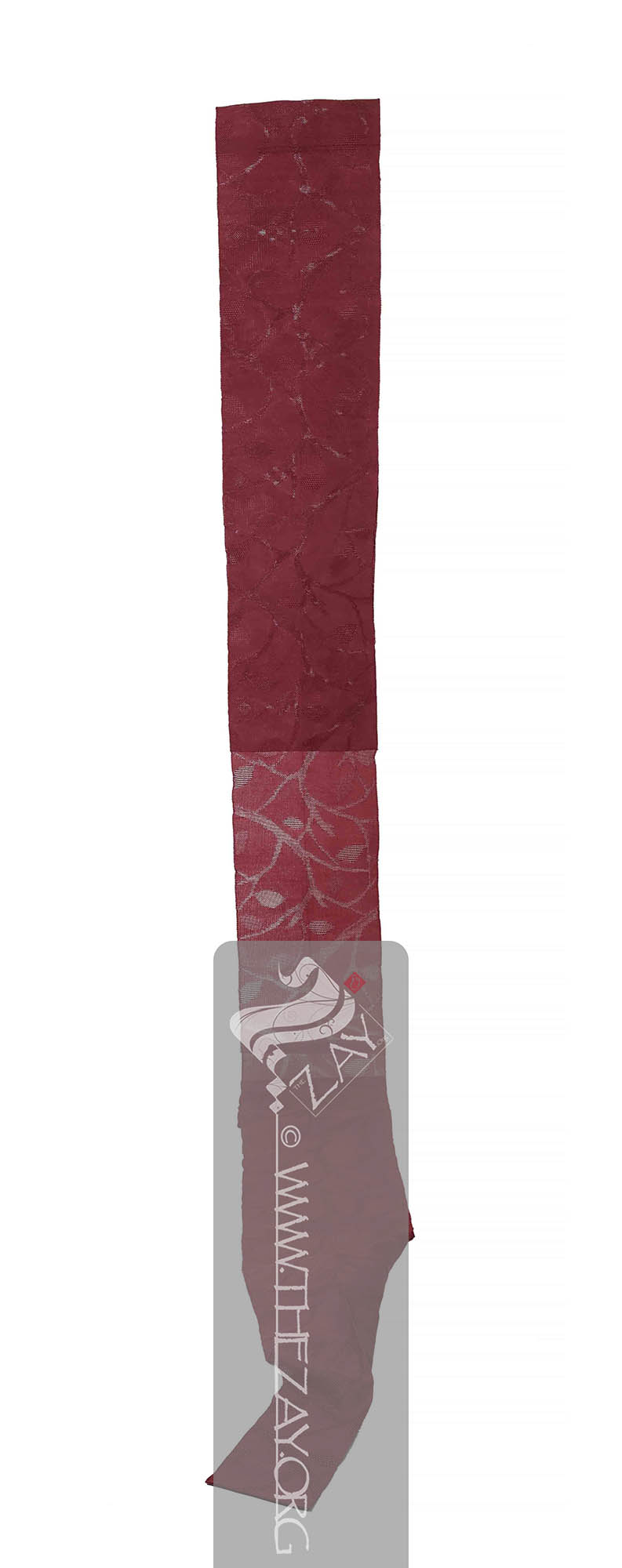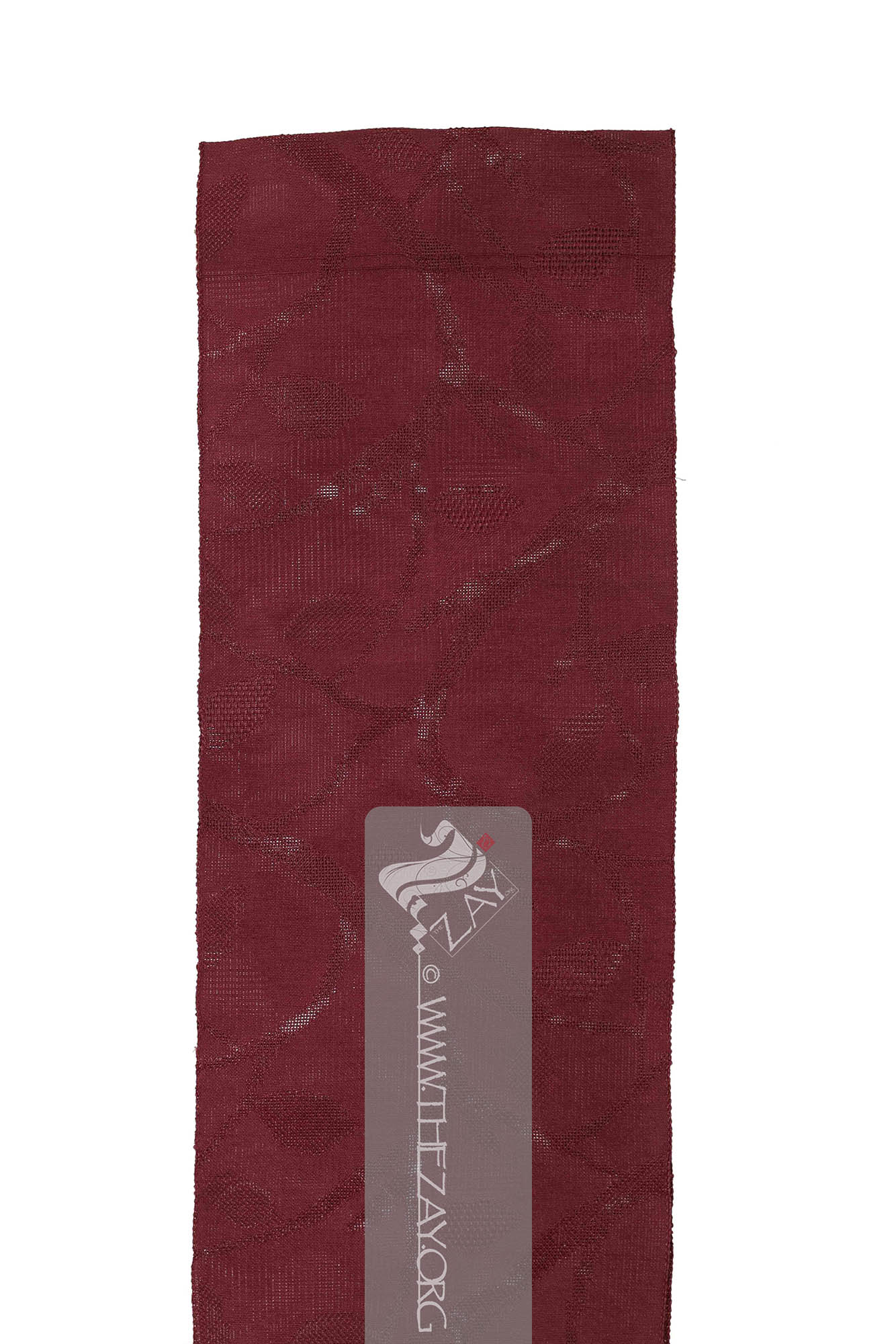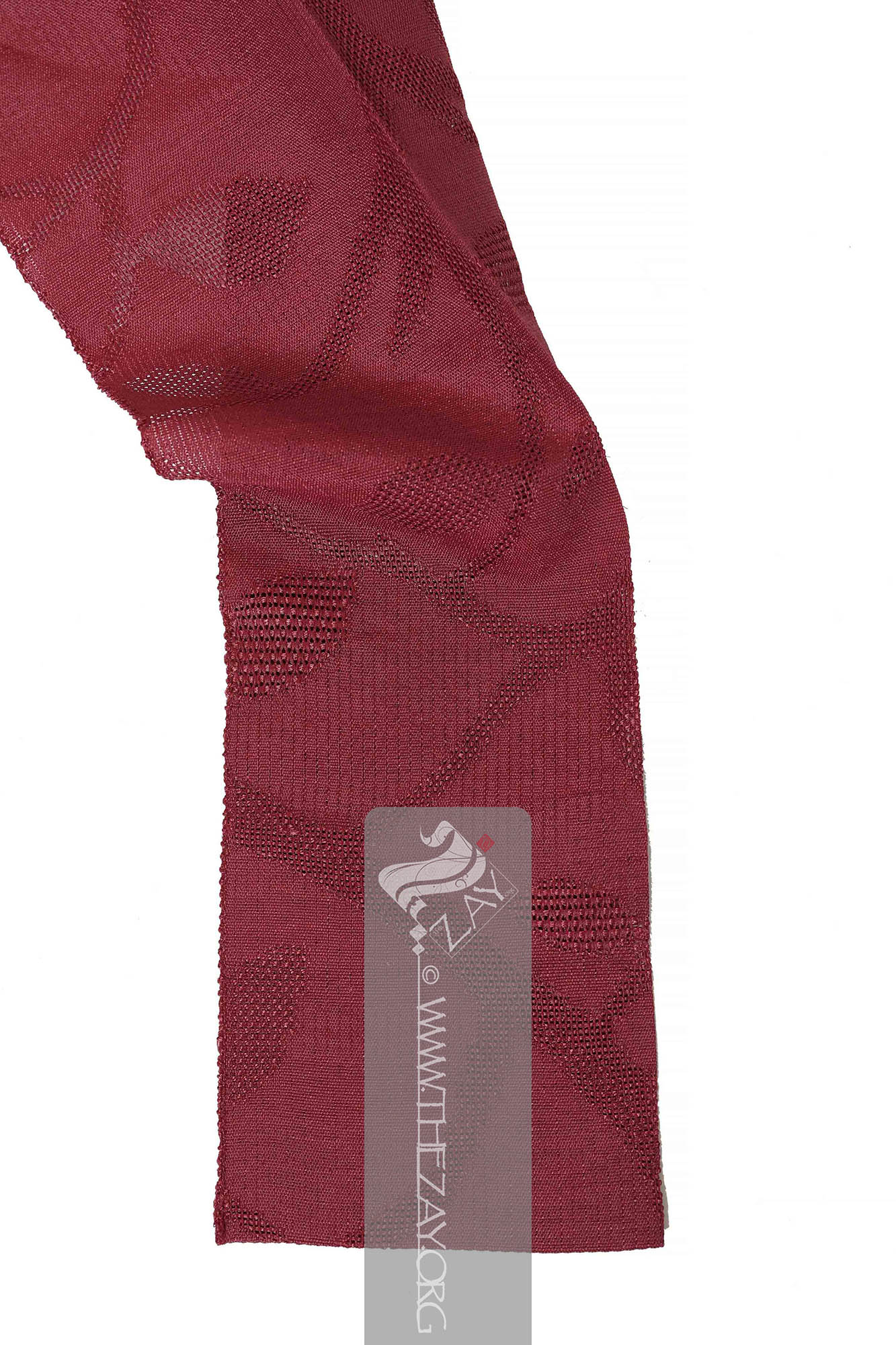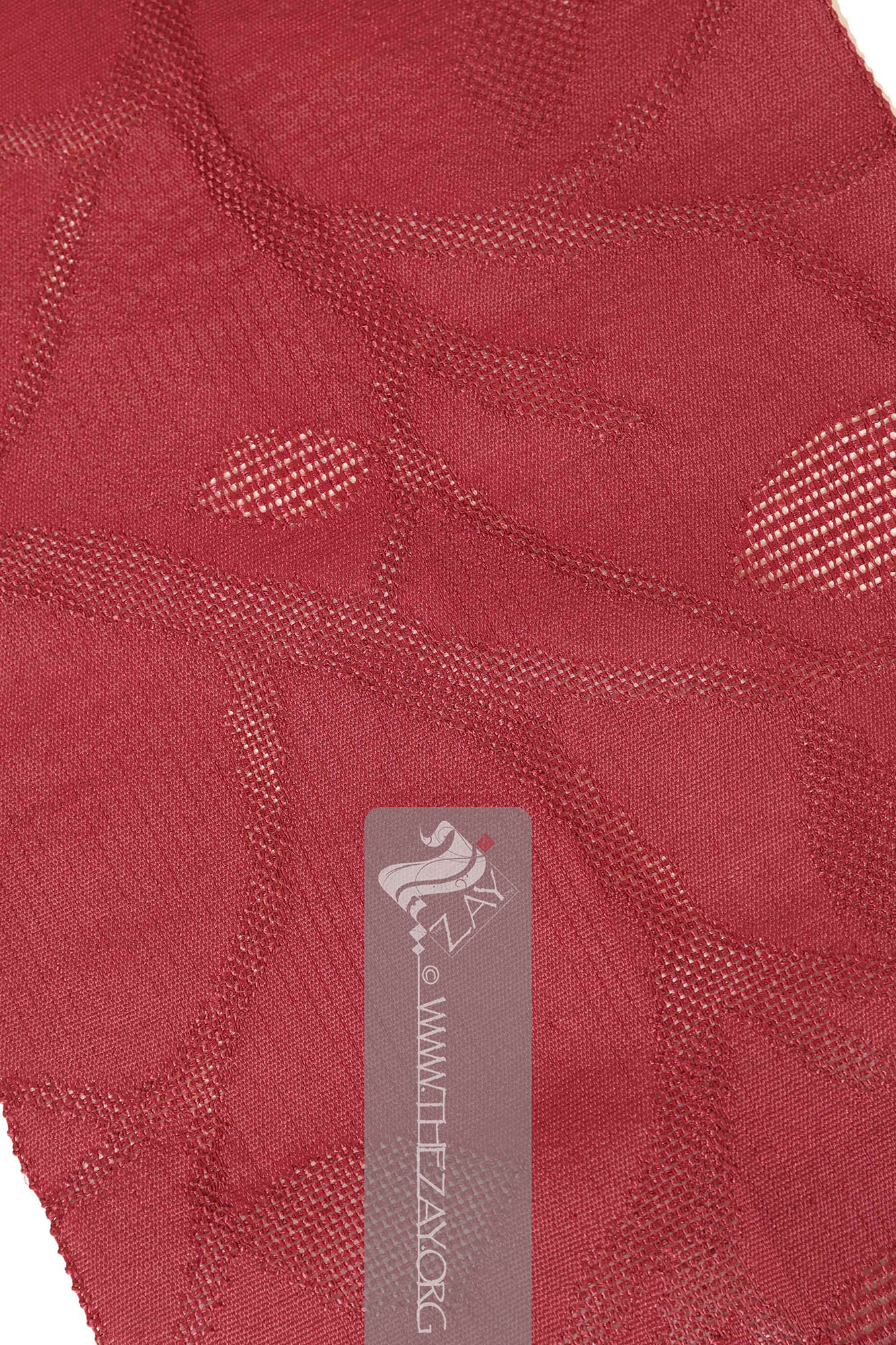







| Local Name | Obi |
| Object Category | Accessory |
| Gender | Female |
| Place Of orgin | Asia |
| Region | Japan |
| Object Range | Japan |
| Dimensions | Length: 372 cm Width: 30 cm |
| Materials | Other |
| Technique | Woven |
| Color | |
| Motif | Floral |
| Provenance | Purchased, dealer, London 2017 |
| Location | The Zay Zay: (Arabic: costume, Pl. azyaā’), a set of clothes in a style typical of a particular country or historical period. Initiative |
| Status | In Storage |
| ZI number | ZI2017.500838 ASIA |
Object History
This beautiful pink woven (obi
Obi: (Japanese), a wide, decorative belt or sash traditionally worn with Japanese kimono. It wraps around the waist, securing the kimono and adding an elegant touch to the attire. They are often intricately designed, featuring rich patterns, textures, and colors that complement the overall kimono ensemble. ) was purchased by Dr. Reem Tariq
Ṭariq: (Arabic; Synonym: tulle_bi_talli
Tūlle_bi_tallī: (French: Tulle – a city in France where fine material for veil was first made; Turkish: tel – wire; Synonym: tariq; talli; badla; khus_dozi ), series of small metal knots made on a woven net ground as embellishment. The term is commonly used in the North African Arab region specifically in Egypt. Ṭariq: (Arabic; Synonym: tulle_bi_talli
Tūlle_bi_tallī: (French: Tulle – a city in France where fine material for veil was first made; Turkish: tel – wire; Synonym: tariq; talli; badla; khus_dozi ), series of small metal knots made on a woven net ground as embellishment. The term is commonly used in the North African Arab region specifically in Egypt.
Object Features
This is a pale pink women’s obi Obi: (Japanese), a wide, decorative belt or sash traditionally worn with Japanese kimono. It wraps around the waist, securing the kimono and adding an elegant touch to the attire. They are often intricately designed, featuring rich patterns, textures, and colors that complement the overall kimono ensemble. woven possibly in stiff hemp featuring floral and foliage patterns. Although not (crocheted) it has a distinct characteristic that makes it looks like it is.
The story of the obi Obi: (Japanese), a wide, decorative belt or sash traditionally worn with Japanese kimono. It wraps around the waist, securing the kimono and adding an elegant touch to the attire. They are often intricately designed, featuring rich patterns, textures, and colors that complement the overall kimono ensemble. is quite interesting. In a traditional (kimono Kimono: (Japanese: ki : wearing, mono: thing, Singular: Kimono) A traditional Japanese long loose robe with wide sleeves tied with a sash around the waist. Presently it is the national dress of Japan. ) ensemble the main kimono Kimono: (Japanese: ki : wearing, mono: thing, Singular: Kimono) A traditional Japanese long loose robe with wide sleeves tied with a sash around the waist. Presently it is the national dress of Japan. is considered subordinate to the obi Obi: (Japanese), a wide, decorative belt or sash traditionally worn with Japanese kimono. It wraps around the waist, securing the kimono and adding an elegant touch to the attire. They are often intricately designed, featuring rich patterns, textures, and colors that complement the overall kimono ensemble. . The reason behind this is possibly the creation and evolution of the particular accessory.
Women from the Kamakura era (1185-1333) used a sash to secure their daily outfit around their waist and this continued till the advent of the Genroku period (1688-1704). Women used to keep a curated collection of sashes for their use with their different outfits.
However, this reasonable practice changed forever because of the Kabuki theatre. An anecdotal theory says that once a kabuki artist who was a female impersonator was very tall. To distract the attention of the audience from his height while he was on stage, he started wearing a wide stiff sash that he tied in different elaborate knots and let trail behind him. This inspired the courtesans of the time to adopt the style thus spreading it through the rest of the society.
Another theory, which is possibly the more accurate one, attributes the weavers from Kyoto for the creation of the obi Obi: (Japanese), a wide, decorative belt or sash traditionally worn with Japanese kimono. It wraps around the waist, securing the kimono and adding an elegant touch to the attire. They are often intricately designed, featuring rich patterns, textures, and colors that complement the overall kimono ensemble. . The trend and fashion for dyed fabric due to the limitation and restrictions issued by the sumptuary laws of Japan slumped the demand for the elaborate brocades that they wove.
Rich brocade Brocade: (Italian: brocco – twisted thread), is a richly decorative fabric woven with an intricate raised pattern. Its origins can be traced back to ancient China, where it was made for the imperial court. It later spread to Europe during the Renaissance and became popular in couture and decorative arts. garments were only allowed to be used by the upper class in Japan, however, the nobility were too poor to be able to afford such plush garments. The merchant class who had the money were imposed with sumptuary limitations which restricted them from wearing a garment made of rich brocades as well as limited their yearly numbers for new robes.
However, as there were no clear laws against sashes or accessories, the weavers from Kyoto exploited this loophole. They surreptitiously colluded with the theatre artists and kabuki actors to promote a new fashion trend that would use their beautiful brocades and tapestry Tapestry: wall hanging or other large piece of fabric that is woven in coloured weft Weft: one of the two basic components used in weaving that transforms thread or yarns into a piece of fabric. It is the crosswise thread on a loom that is passed over and under the warp threads. threads or embroidered with a decorative design. Typically made of wool, but they can also be made of other materials such as silk, linen, or cotton. Often used to decorate homes, churches, and other buildings. woven fabrics.
A plethora of elaborate ways of tying these sashes were devised and over time each knot came to define and reflect the wearer’s age and status. For example, courtesans tied theirs in the front as it was easier and quicker for them to undo it. While young unmarried women wore it at the back with long loose ends hanging behind them.
Gradually the obi Obi: (Japanese), a wide, decorative belt or sash traditionally worn with Japanese kimono. It wraps around the waist, securing the kimono and adding an elegant touch to the attire. They are often intricately designed, featuring rich patterns, textures, and colors that complement the overall kimono ensemble. attained the position of the most important feature of women’s outfits to the point where the design of the kimono Kimono: (Japanese: ki : wearing, mono: thing, Singular: Kimono) A traditional Japanese long loose robe with wide sleeves tied with a sash around the waist. Presently it is the national dress of Japan. was inspired by the obi Obi: (Japanese), a wide, decorative belt or sash traditionally worn with Japanese kimono. It wraps around the waist, securing the kimono and adding an elegant touch to the attire. They are often intricately designed, featuring rich patterns, textures, and colors that complement the overall kimono ensemble. . By c. 19th century, kimono Kimono: (Japanese: ki : wearing, mono: thing, Singular: Kimono) A traditional Japanese long loose robe with wide sleeves tied with a sash around the waist. Presently it is the national dress of Japan. embellishment came to be limited near the fall hemline to let the wearer decide upon the elaborateness of the obi Obi: (Japanese), a wide, decorative belt or sash traditionally worn with Japanese kimono. It wraps around the waist, securing the kimono and adding an elegant touch to the attire. They are often intricately designed, featuring rich patterns, textures, and colors that complement the overall kimono ensemble. – a practice that is still by and large an overall pattern.
Links
Crepe: (Latin: crispus; Old French: crespe – curled or frizzed), is a lightweight, crinkled fabric with a pebbled texture woven from a hand spun untreated or ‘in the gum’ silk yarn.
-fabrics-chirimen chirimen: A Japanese crepeCrepe: (Latin: crispus; Old French: crespe – curled or frizzed), is a lightweight, crinkled fabric with a pebbled texture woven from a hand spun untreated or ‘in the gum’ silk yarn.
fabric traditionally made from silk. It has a distinctive pebbly texture and is commonly used in kimono Kimono: (Japanese: ki : wearing, mono: thing, Singular: Kimono) A traditional Japanese long loose robe with wide sleeves tied with a sash around the waist. Presently it is the national dress of Japan. and other traditional garments. Originally brought from China chirimen weaving extensively developed during the Edo period (1603-1868) and continues to be a popular textile in modern Japan. -kinsha